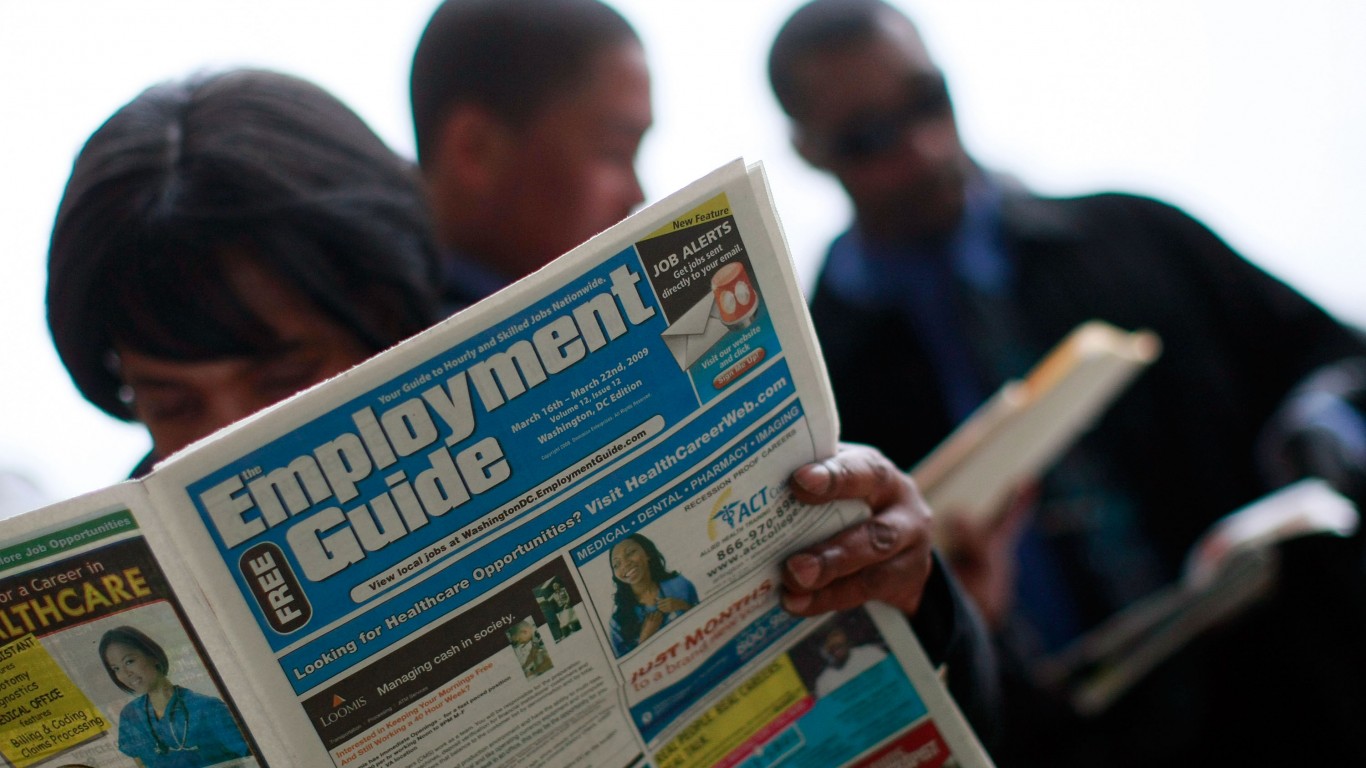
The New York Federal Reserve Bank has released its 2016 economic outlook for April, and it corroborates other reports for a weak level of growth expectations in 2016. Jonathan McCarthy, Richard Peach and Robert Rich issued their report on Friday and it seems rather lackluster. As usual, this is a forecast for U.S. gross domestic product (GDP) growth, inflation and the unemployment rate. These forecasts cover 2016 and also give some outlooks for 2017.
In the New York Fed’s forecast released last May, the group anticipated a slowing of growth in 2015 to about 2.0% from around 2.5% in 2014. Most of the slowing was due primarily to the effects of dollar appreciation, as well as weaker growth among major trading partners. Weaker domestic energy investment also contributed as substantially lower oil prices prevailed.
Despite weakness, some offsetting factors were seen. These sources of weakness were expected to be partially offset by faster growth of household spending after the expected boost to real disposable income from lower energy prices.
Do you remember hearing all the “This is great news for America!” statements from economic pundits about lower energy prices? Well, this debunks that malarkey even further. The New York Fed included the dollar strength in this, but it said:
The appreciation of the dollar and the decline of drilling activity were both larger than anticipated, resulting in weaker-than-expected growth over the second half of 2015. Nonetheless, the 2 percent growth rate of 2015 was above the economy’s potential growth rate, resulting in a further decline of unemployment and some firming of core inflation at the end of the year.
Another issue is that last year’s forecast was that GDP would grow to around 2.5% in 2016 as the forces restraining growth would begin to wane. Now the New York Fed is forecasting that GDP growth in 2016 will remain around 2.0%, but the remainder of 2016 should see growth of about 2.5% annually. Favorable underlying fundamentals were cited as being a fairly healthy household and business balance sheets, slightly stimulative fiscal policy and still-accommodative monetary policy. Also cited was that a significant inventory correction is expected to draw down during the first half of 2016. The New York Fed did again forecast that the restraining forces mentioned earlier are still expected to fade.
Overall this report has a positive in tone. Unfortunately, the growth figures here do not sound very much like impressive growth numbers at all. The flip side of the equation is that this does at least line up with why you might not need to worry about runaway interest rates any time soon.
The remainder of the New York Fed’s outlook for 2016 was as follows:
Consumer spending is anticipated to grow around 2.5 percent, slightly slower than in 2015, as real income growth is sustained through faster growth of compensation and low overall inflation. Residential investment growth is expected to increase somewhat, supported by continued improvement in the labor market and low mortgage interest rates. Business fixed investment is expected to begin to recover as oil and gas drilling stabilizes and the manufacturing capacity utilization rate moves higher, but that recovery should still be fairly subdued. These developments favorable to growth will likely be offset to some extent by a continued substantial drag from net exports.
While lower than last year’s forecast, projected growth in 2016 will remain above the economy’s potential growth rate—which we now estimate to be 1.75 percent. As a result, the unemployment rate should decline by the end of this year to around 4.75 percent, which is our estimate of the unemployment rate associated with stable inflation. Inflation, as measured by the personal consumption expenditures (PCE) deflator, should move gradually higher with relatively stable energy and import prices, but remain below the FOMC’s longer-run objective of 2 percent.
For 2017, we expect growth of real GDP to slow to a pace close to our estimate of potential growth because much of the resource slack in the economy is likely to have dissipated by then. The unemployment rate is expected to be roughly stable, with productivity growth gradually moving up to its long-term trend of 1.25 percent to 1.5 percent (on a nonfarm business sector basis). In addition, the staff anticipates that the labor force participation rate will stabilize in 2017. Inflation is expected to approach the FOMC’s objective owing in part to well-anchored inflation expectations.
As a reminder, Goldman Sachs recently forecast that good economic news would be bad news for stocks. Maybe mediocre news is just the right recipe.
Cash Back Credit Cards Have Never Been This Good
Credit card companies are at war, handing out free rewards and benefits to win the best customers. A good cash back card can be worth thousands of dollars a year in free money, not to mention other perks like travel, insurance, and access to fancy lounges. See our top picks for the best credit cards today. You won’t want to miss some of these offers.
Flywheel Publishing has partnered with CardRatings for our coverage of credit card products. Flywheel Publishing and CardRatings may receive a commission from card issuers.
Thank you for reading! Have some feedback for us?
Contact the 24/7 Wall St. editorial team.


